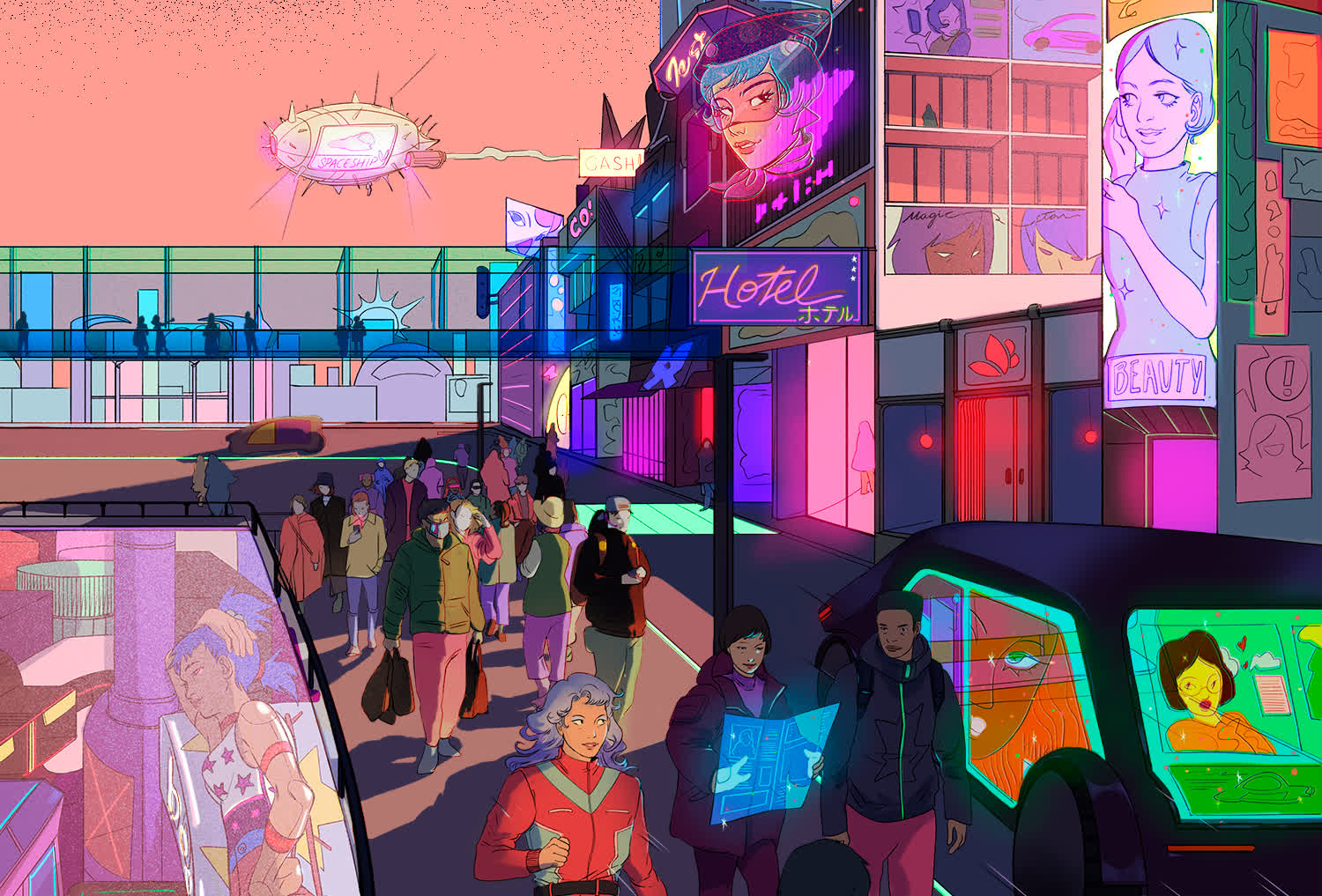Why it matters: Manufacturers have included quantum dots in LED displays for a while now, but they're working on screens that exclusively use them. The technology could become efficient and cheap enough to succeed LCD and OLED while expanding the range of applications for digital displays.

At CES 2023, Nanosys held a "top-secret" demonstration for its latest work on electroluminescent quantum dots – a candidate for the next mainline display technology. Nanosys couldn't publish any pictures of its CES demo, but the potential on hand could be wide reaching.
Considered extremely efficient because they emit almost all the light they absorb, quantum dots produce light when fed energy and give off different colors depending on their size. Screen manufacturers just use red, blue, and green quantum dots, but other colors are possible.
Quantum dots already make up the "Q" in QLED and "QD" in QD-OLED displays. So far, those photoluminescent quantum dots, which receive energy from light, have only played second-fiddle to more mature display technologies.

Nanosys' electroluminescent quantum dot screens would only use quantum dots powered by electricity. They could significantly reduce energy consumption and lower manufacturing costs while at least matching the picture quality and brightness of QD-OLED.
The CES prototype was only a six-inch screen attached to a complex set of wires, but electroluminescent quantum dot displays could scale to a variety of sizes. Manufacturers could use them for big-screen TVs, smartphone displays, VR headsets, and more.
Furthermore, the efficiency and low-cost nature of electroluminescent quantum dots could make them viable for a wide variety of surfaces that don't normally incorporate screens. Nanosys thinks the technology could significantly advance augmented reality by working with transparent objects.

The Nanosys website contains artwork envisioning heads-up displays, advertisements, and other information on windows, car windshields, and other glass materials. CNET speculates that electroluminescent quantum dot displays could show drivers important information on their windshields without drawing their eyes away from the road, or create AR experiences on otherwise ordinary glasses.
The company admits direct-view electroluminescent quantum dot displays are probably still several years away. The format they first appear in will depend on which screen manufacturers will be willing to adopt the technology first: TVs, phones, VR, or something else.